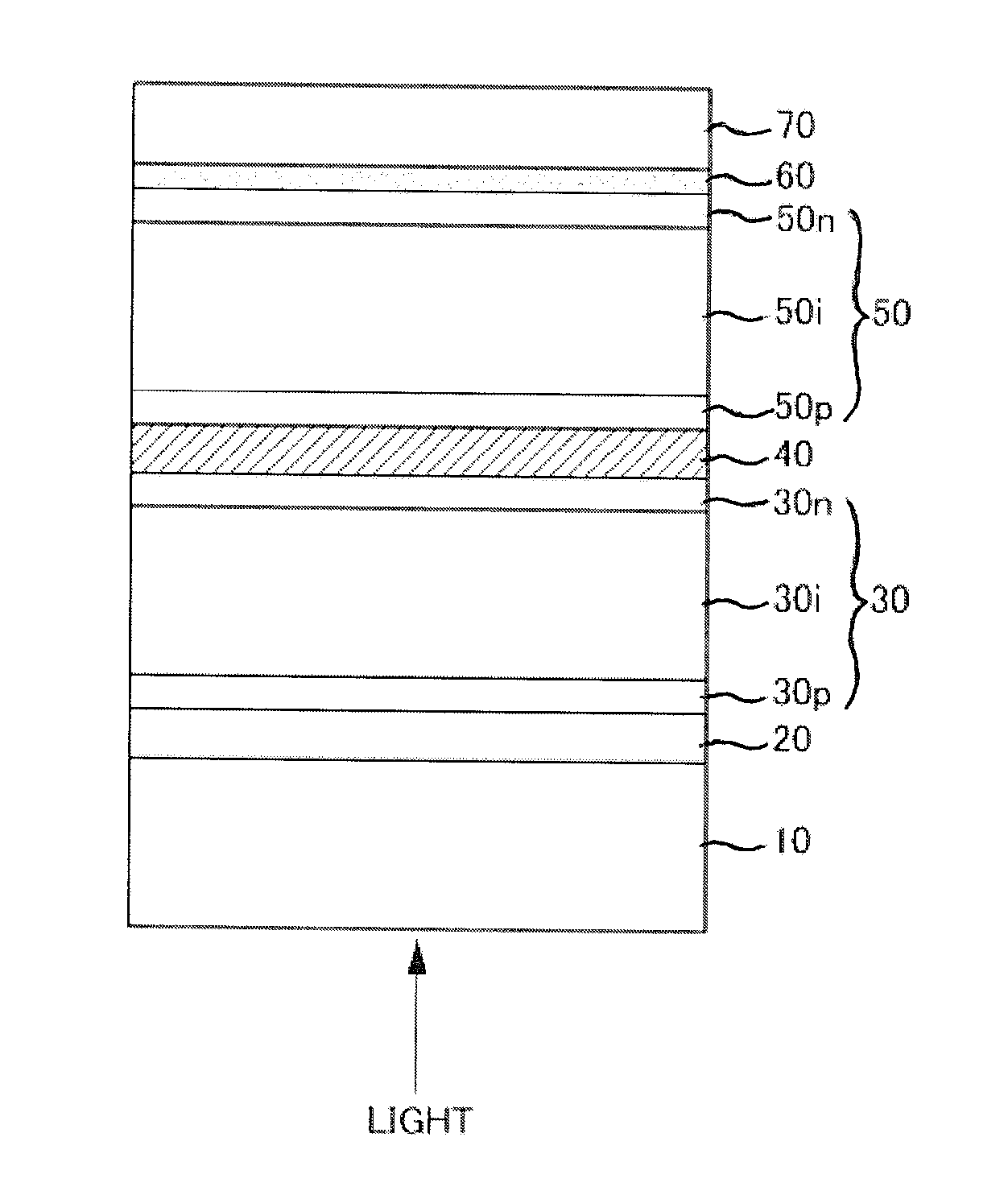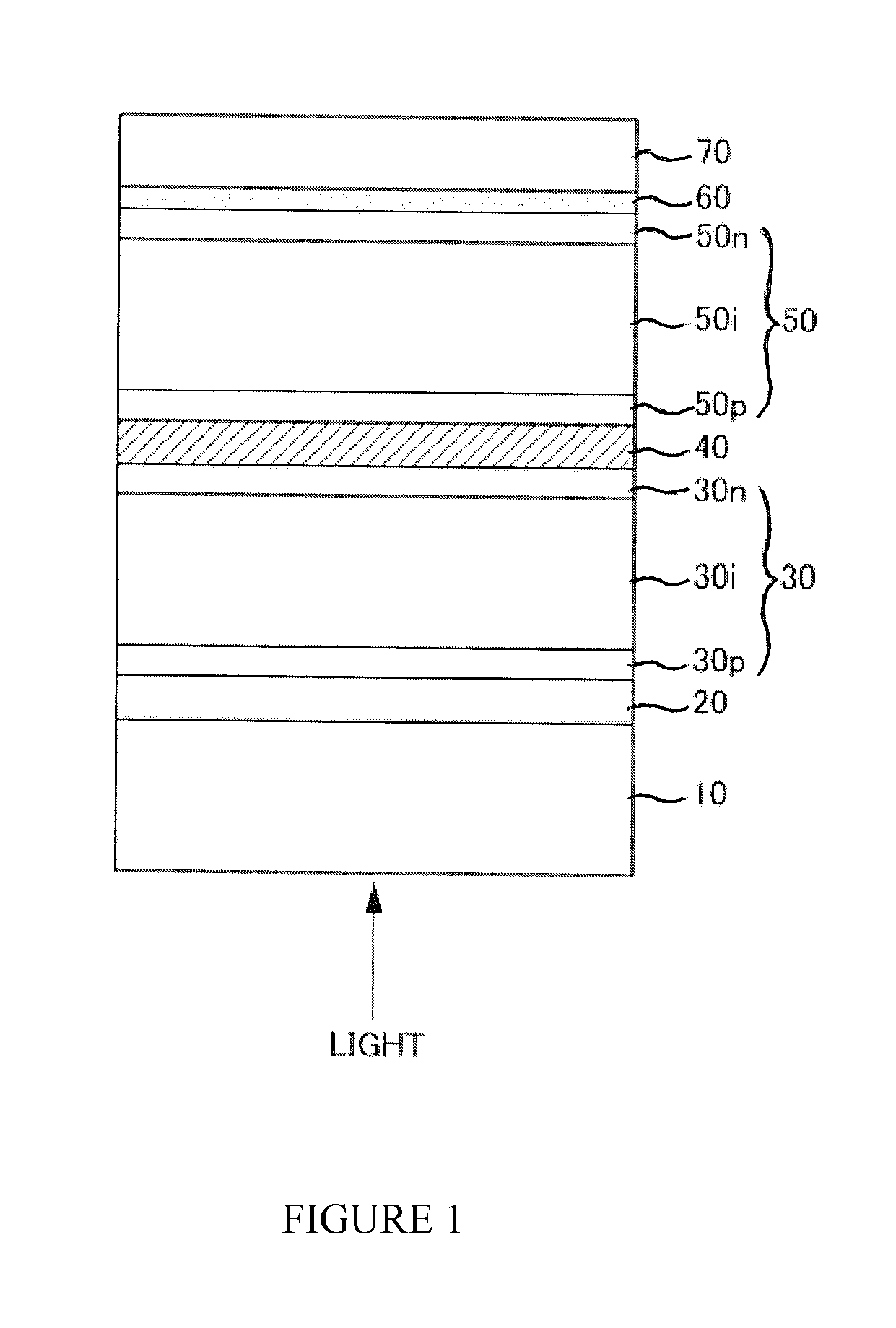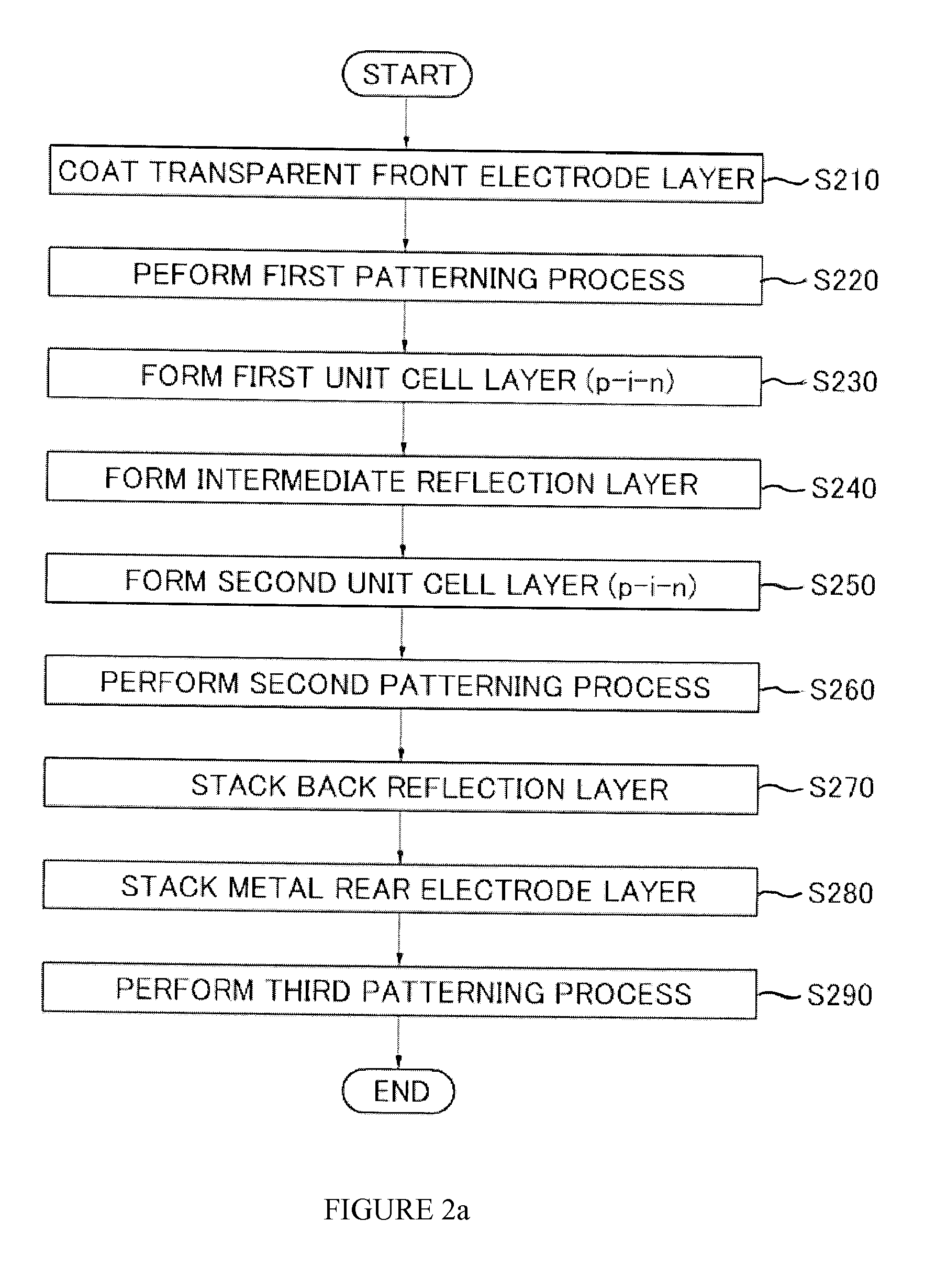Tandem thin-film silicon solar cell and method for manufacturing the same
a solar cell and thin film technology, applied in the field of thin film silicon solar cells, can solve the problems of energy becoming the most serious problem affecting human future life, the production of solar-grade silicon wafers which is a main source does not catch up with explosive demand, and the production of solar-grade silicon wafers is running short all over the world, so as to reduce refractive index, simplify the layout of mass production lines, and increase the production yield of solar cells
- Summary
- Abstract
- Description
- Claims
- Application Information
AI Technical Summary
Benefits of technology
Problems solved by technology
Method used
Image
Examples
Embodiment Construction
[0044]Reference will now be made in detail embodiments of the invention examples of which are illustrated in the accompanying drawings.
[0045]Tandem thin-film silicon solar cell has a double-junction structure or a triple-junction structure. However, a tandem thin-film silicon solar cell having a double-junction structure will be described as an example in FIG. 1.
[0046]As illustrated in FIG. 1, a tandem thin-film silicon solar cell according to an embodiment comprises a transparent insulating substrate 10, a transparent front electrode 20, a first unit cell 30, an intermediate reflection layer 40, a second unit cell 50 and a metal rear electrode 70.
[0047]The transparent front electrode 20 is formed on the transparent insulating substrate 10 and includes a transparent conducting oxide (TCO).
[0048]The first unit cell 30 are positioned on the transparent insulating substrate 10 and the transparent front electrode 20 and comprises a p-type window layer 30p, an i-type absorber layer 30i a...
PUM
 Login to View More
Login to View More Abstract
Description
Claims
Application Information
 Login to View More
Login to View More - R&D Engineer
- R&D Manager
- IP Professional
- Industry Leading Data Capabilities
- Powerful AI technology
- Patent DNA Extraction
Browse by: Latest US Patents, China's latest patents, Technical Efficacy Thesaurus, Application Domain, Technology Topic, Popular Technical Reports.
© 2024 PatSnap. All rights reserved.Legal|Privacy policy|Modern Slavery Act Transparency Statement|Sitemap|About US| Contact US: help@patsnap.com










